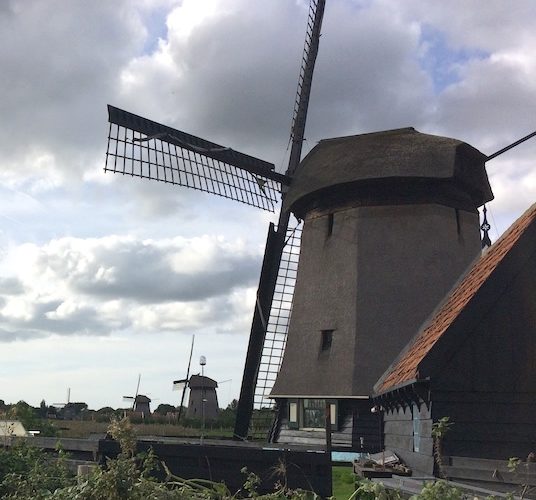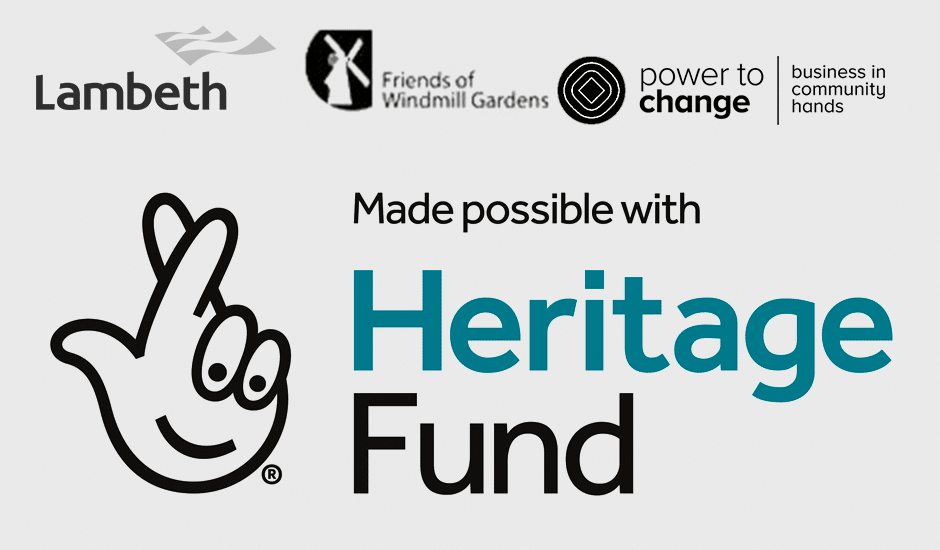A visit to one of Holland’s oldest windmills

Jean Kerrigan visits a special windmill in Holland
In late September we had two special visitors at Brixton Windmill. Tom Kreuning and Joan Harmsen had travelled from Holland and wanted to see inside the mill as they had only ever seen the outside. Tom is the secretary of the Gilde van Vrijwillige Molenaars and he and Joan know all about the long history of Dutch windmills.
In early October I was lucky enough to visit their home – a converted windmill. Strjkmolen D was built in 1627 close to the medieval centre of the city of Alkmaar, North Holland. Its most interesting feature is that it is a thatched windmill.
It was a fascinating afternoon. Tom gave me a full tour of the windmill, which they have converted into a beautiful home where he and Joan have lived in since 2002. He showed me the wind-driven machinery that still works and explained the original purpose of the windmill.
Joan – the brains behind the interior design of their beautiful home – explained that six thatched windmills were constructed close together in the early decades of the 17th century to help drain water to create the Heerhugowaard polder.
The merchants and traders of Alkmaar wanted more land to increase their wealth and power, and the function of the six windmills was keep the reclaimed land dry. The mills pumped water from the polder’s main drainage canal into another canal built specifically to carry excess water down to the sea. The windmills only had to lift the excess water 40 cm into the new canal.
All six were built to the same design, and their tapering wooden structure of eight massive wooden beams is totally covered in thatch from the first floor to the top of the tower. The rotating cap is also covered in thatch – a material that was abundant in the reed beds of the surrounding area.
In 1688 the windmill furthest from the city centre burned down and, despite a 100-year dispute, it was never replaced. That left five windmills to move the excess water from one canal to the other using wind-powered scoop wheels that were later replaced by Archimedean screws. The water pumping technique was not changed until 1941, when a new pumping system was put in place and the second canal was filled in. The modern drainage system meant there was no room for the windmill nearest to the city centre so it was carefully dismantled and reconstructed in the Netherlands Open Air Museum in Arnhem. However, during WWII, it was hit by a British bomb and totally destroyed.
Today four windmills remain: B, C, D and E. All four have been carefully restored and converted to homes, each one in its small patch of land. As Tom pointed out, this makes it very easy to see if your neighbour has decided to release the sails to turn in the wind. If that is the case and Tom is at home he quickly climbs the wooden sails to unfurl the sailcloth and then climbs the ladders inside the mill to the cap to turn it so the sails face into the wind.
The mechanism to turn the cap is a very large vertical wheel that that just one person can turn. Once the brake is released inside the cap the sails turn as they have done since 1627.
Three of the mills have had their pumping mechanisms removed in the most recent restoration, leaving just one that can still pump water. The only condition necessary to live permanently in one of these amazing building is to be a trained miller and to set the sails to turn in the wind whenever conditions are right. Tom qualified as a miller in 1993 and is secretary of the Guild of Volunteer Millers.
Tom and Joan live on the ground, first, and second floors, they have a very productive garden and keep chickens – apparently there is no problem with foxes in the Netherlands!
It was a fascinating and enjoyable visit and I want to thank Tom and Joan for their generous hospitality. You can find out more from their website where you can see videos of the interior of their home, the windmill and how it works, and also see the process of re-thatching, which last happened at their home in 2016.

